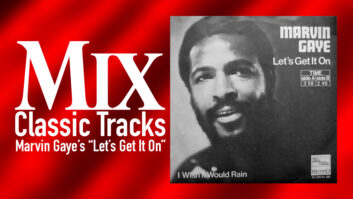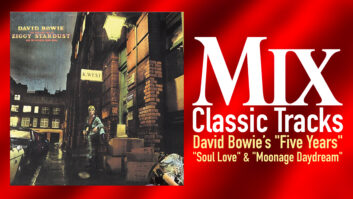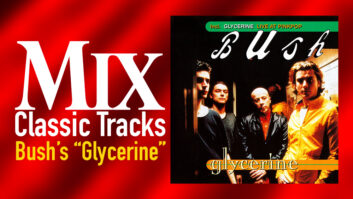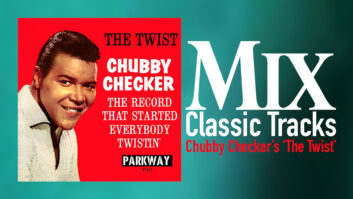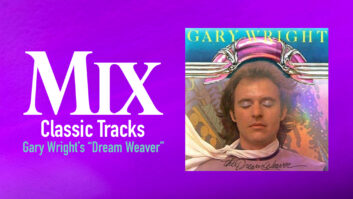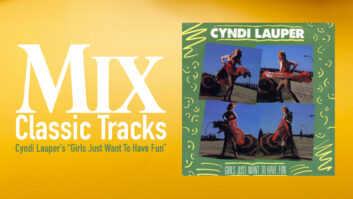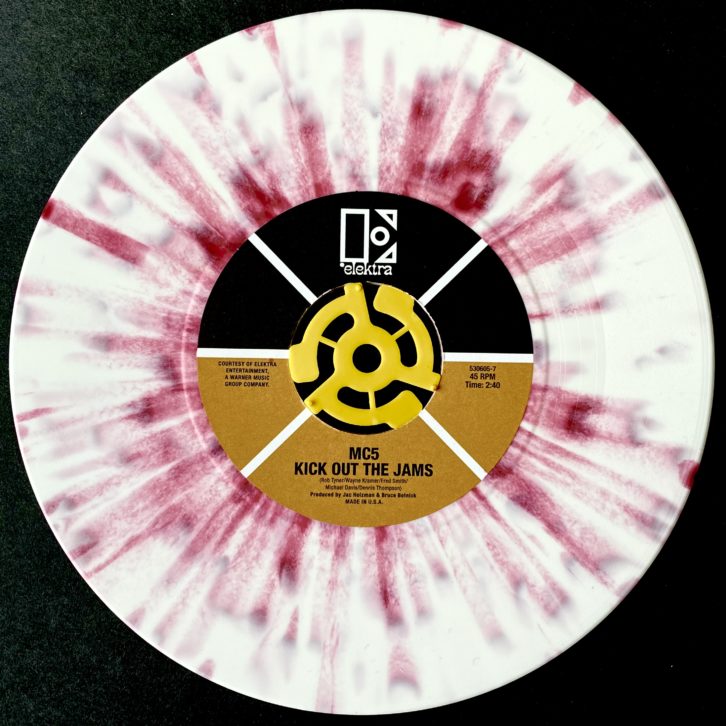
Back in the mid-’60s, when regionalism was still something you could hear on a record and on the radio, Detroit and Southeastern Michigan were not only home to Motown, but became the breeding ground for some of the hardest-rocking bands to come out of America. Just like you could spot a Memphis, New Orleans or Philly record, Detroit-area rockers took the most visceral elements of blues-influenced British Invasion bands and gritty American soul and R&B music and turned the rockets up with an identifiable hard-edged immediacy that was absolutely regional. How could any lover of rock ‘n’ roll not dig bands like Mitch Ryder & The Detroit Wheels, Ted Nugent & The Amboy Dukes, The Frost (featuring guitarist/singer Dick Wagner), The Stooges, The Rationals, SRC, Brownsville Station and Bob Seger?
One band that distilled the brutal essence of rock’s primal roar to its most fearless, floor-shaking manifestation was the Motor City Five, better known as The MC5. The MC5 comprised vocalist Rob Tyner, guitarists Fred “Sonic” Smith and Wayne Kramer, bassist Michael Davis and drummer Dennis Thompson. (Bassist Pat Burrows and drummer Bob Gaspar were in the first lineup formed in 1964.) Though The MC5 shared the British Invasion bands and American R&B influences of their peers, they soon began immersing themselves in jazz, feedback and experimental music. By the time they signed with Elektra, The MC5 became legendary throughout the Midwest for their incendiary live shows, notable not only for their explosive original material, but also for Tyner and the band’s testifying stage banter that was a stew of radical politics and James Brown throw-down soul-revue incitement.
“Our whole thing was based on James Brown,” says MC5 guitarist Kramer. “We listened to Live at the Apollo endlessly on acid. We would listen to that in the van in the early days of 8-tracks on the way to the gigs to get us up for the gig. If you played in a band in Detroit in the days before The MC5, everybody did ‘Please, Please, Please’ and ‘I Go Crazy.’ These were standards. We modeled The MC5’s performance on those records. Everything we did was on a gut level about sweat and energy. It was anti-refinement. That’s what we were consciously going for.”
It was Elektra publicist Danny Fields who brought The MC5 to label head and producer Jac Holzman and producer/engineer Bruce Botnick’s attention. “The MC5 were part of an extraordinary scene,” explains Kramer. “When Danny Fields came out to Detroit, he saw what was the best-kept secret in the music business. There was this band without a hit record that could draw 3,000 people a night in the Detroit area. We could do that in Chicago, and we could do it in Cleveland. We played for years all over that part of the country and built up a grass-root following that couldn’t be denied. The kids knew all of the songs and were passionate about this band. This band was theirs, and this band was talking about what they were talking about. There was this bond, and so from a business point of view, the clear idea was to translate this to a national level and then translate it to an international level. The MC5 burned very hot and very bright, but very fast and burned out.”
Botnick recalls his first trip to see The MC5 prior to formally recording what would become Kick Out the Jams, a concert document that, decades after its release, is still one of the most powerful hard rock albums ever committed to tape. “Jac said to me that this band is supposed to be great, so we flew to the Grande Ballroom [in Detroit] to hear them,” says Botnick. “Thank God I had the presence of mind to take a cassette machine with me that had a built-in microphone, because they were so loud I couldn’t hear what was happening. It was the loudest thing I had ever heard in my life. Getting back to the hotel room, Jac and I were amazed. They were very good songs, so I was really excited, and then we planned to record.”
It was this raw concert power that inspired Elektra and the band to make their major-label debut a concert recording. “The conventional wisdom was, you cut two or three studio albums and then you did your live album,” Kramer says. “We thought it was a revolutionary move to do the first album live. We had worked so hard to perfect our live performance, and I think that the consensus was that The MC5 is all about the live performance, so let’s see if we can capture this.”
The recordings were done over the course of two nights — October 30th and Halloween — at the Grande Ballroom. They were also recorded the day of the 31st without an audience.
“Jac came up with that idea,” says Botnick. “It worked fairly successfully, because sometimes you wouldn’t get a really good performance live. I wouldn’t consider it a cheat; we were trying to put the best foot forward. We only recorded, I think, one or two shows at the most one night, so we didn’t have a lot of takes to choose from. And then we recorded the next day everything that they did in the show we did in the afternoon.”
Botnick brought Wally Heider along to help with the mobile recording setup. “Wally flew all of the gear to Detroit and rented a truck with a lift gate,” he says. “We loaded all of the gear in and put packing blankets on the walls and had, I think, three loud speakers — three L604s and a utility cabinet — and one of the Universal Audio tube consoles. We recorded on one 8-track machine.”
During the morning of the gig, Heider and Botnick had a major scare: “We were putting the stuff in the truck and the machine had just come up on the lift gate,” Botnick recalls. “Wally was in the truck with me and we were talking with our back to the machine, and all of a sudden, we felt the truck bounce and then we heard a crunch. The 8-track fell over backward, six feet down and hit the ground. It was the only machine we had. Wally and I got down from the truck, stood the machine up, turned it on and it worked perfectly. It was a 3M 8-track — one of the great M-79s. They don’t make machines like that anymore.”
Kramer recalls, “They had a little TV camera up on the stage and a small monitor in the truck, which I thought was the height of technology — that they could be in the truck and actually see the stage.”
For the 8-tracks, Botnick had two mics out in the hall, two vocal mics, two guitar mics, a bass mic and a drum track. It was recorded non-Dolby on BASF tape at +10. “For the drums, I probably used two Sony C37s on the overhead, one on the snare, and probably a SM56 on the kick — four mics in all,” Botnick says. “I seem to remember using AKG, not the C12, but the other one — the 12A, which was the forerunner of the AKG 414, but the tube version — on the guitars. Everything had pads, and the bass was miked as well with the direct box. I used SM57s or 58s on the vocals. It was a pretty simple setup. I wasn’t using any booms; just little short stands with sandbags in front of the guitar amps and the bass amp, so they weren’t going anywhere. It was the same thing with the drums; they had sandbags on them, too.
“They were so loud that there was incredible isolation,” continues Botnick. “If you were standing in front of Fred ‘Sonic’ Smith’s guitar, that’s all you’d hear. I was astonished at how much separation there was on the drums. When I recently went in to do a surround remix, there was more than enough for me to go in and EQ everything the way I wanted to do it. If I wanted to compress anything, I could do it without bringing up the other instruments. Sometimes, too loud works in your favor. It’s amazing. You don’t really need a whole lot of baffling.”
Classic Tracks: The Doobie Brothers’ “What a Fool Believes”
The most controversial cut on the album was the title track, which opened up with one of the most famous calls to action in all of rock history: Out of the gate, lead singer Tyner breathlessly says, “Right now. Right now. Right now, it’s time to…” He pauses for a second and then screams out, “Kick out the jams, motherf******s!” At that moment, The MC5 unleashes a righteous metallic freight-train guitar riff roar that is astonishing in its pure energy.
According to MC5 bassist Davis, “When that song was written, we didn’t even think much of it as being a major part of our set. It was almost like a filler song, because we were coming up with a lot of epic and very dramatic pieces that had high drama and mega-proportions at the time. So here comes ‘Kick Out the Jams,’ this three-minute thing that was just there for a little flash, because it didn’t carry the weight of the other material that we were more interested in doing. It was almost an afterthought, a ‘We need something here that breaks the action and is a little relief from the heaviness.’ So we wrote that simple little riff and Rob [Tyner] was banished to the dressing room to come up with some lyrics. ‘You go in there and don’t come out until you have some f***ing words!’ So about 20 minutes later, he reappeared with the lyrics to ‘Kick Out the Jams.’ It was just really a song about how we liked to play. Then it became a tool for us to slander other musicians, to shame other musicians into putting more of themselves into their stuff, to quit posing and fool everybody with bullshit. Be honest. So ‘Kick Out the Jams’ started off not being a big thing, and then turned into the thing that described The MC5 perfectly.
“Right before the first show,” Davis continues, “when we got all our levels and everything set, we were asked, ‘Can you do one where you don’t say “motherf*****’? Can you do one where you say something else, like “brothers and sisters”?’”
“We knew that ‘Kick Out the Jams Motherf******s’ would never be a hit single; we weren’t stupid,” adds Kramer. “So we had absolutely no trouble with recording another version of the intro with ‘Kick Out the Jams, Brothers and Sisters.’ We had to adjust that all of the time, because the police would be waiting for us at the gigs telling us that if we sang that song, they would arrest us. Or the promoter would say, ‘If you sing that song, you won’t get paid.’ So we had a hundred different versions: We had ‘Kick Out the Jams, Mother Superior,’ ‘Kick Out the Jams, Mammy Jammy,’ ‘Kick Out the Jams, Mustard and Ketchup,’ and ‘Kick Out the Jams Sap Suckers.’ Tyner would just make them up on the spot and we had no problem with it, and that’s why we recorded the alternative “Brothers and Sisters” version that afternoon at soundcheck. The prevailing attitude was, ‘When is somebody going to do something about The MC5? We can’t allow this rock band to do what they’re doing and say what they’re saying.’”
Botnick mixed the album at Elektra Sound Studios Los Angeles. “When I mixed this, I was not really happy with the perspective that I was getting through the big loudspeakers, so I wound up mixing it with some electrostatic headphones,” he says. “I think they were Koss. They worked pretty good for this, and I was able to get the balances that I wanted. I couldn’t seem to hear it on the loudspeakers for some dumb reason. Maybe it was because the music was so different than anything I had ever done. The perspectives just didn’t seem to work on the speakers in the studio.”
Even though much has been made of “Kick Out the Jams” in its uncensored form, the track and album are so much more than a word that now has been heard so many times that it is practically meaningless. The power of The MC5’s music has always been in the band’s uncompromising commitment to the liberating essence of real, unfettered rock ‘n’ roll. Check out the hyperdrive feedback anthem “Starship,” or the lurching push-and-pull crush of “Borderline” or the testosterone-crazed heaviness of “I Want You Right Now.” It’s not for the faint of heart.
Truth be told, The MC5 never sold many records, and their history after “Kick Out the Jams” is short and spotty, producing just one more great album — Back in the USA, produced by Jon Landau. They broke up in the early ’70s. But during their brief moment, when they were really “on,” they seemed like the embodiment of some glorious rock revolution, tearing down the walls with brute musical force.
“There was this feeling of electricity in the air when we played,” Davis remembers. “Especially on ‘Kick Out the Jams,’ I felt like I was floating above the ground. There was so much energy present and people picking up on it, and we were just laying it out there. I felt like I was tied to a white rope of electricity and just shaking on it, and everybody was just there, a part of the light. It was magic.”
